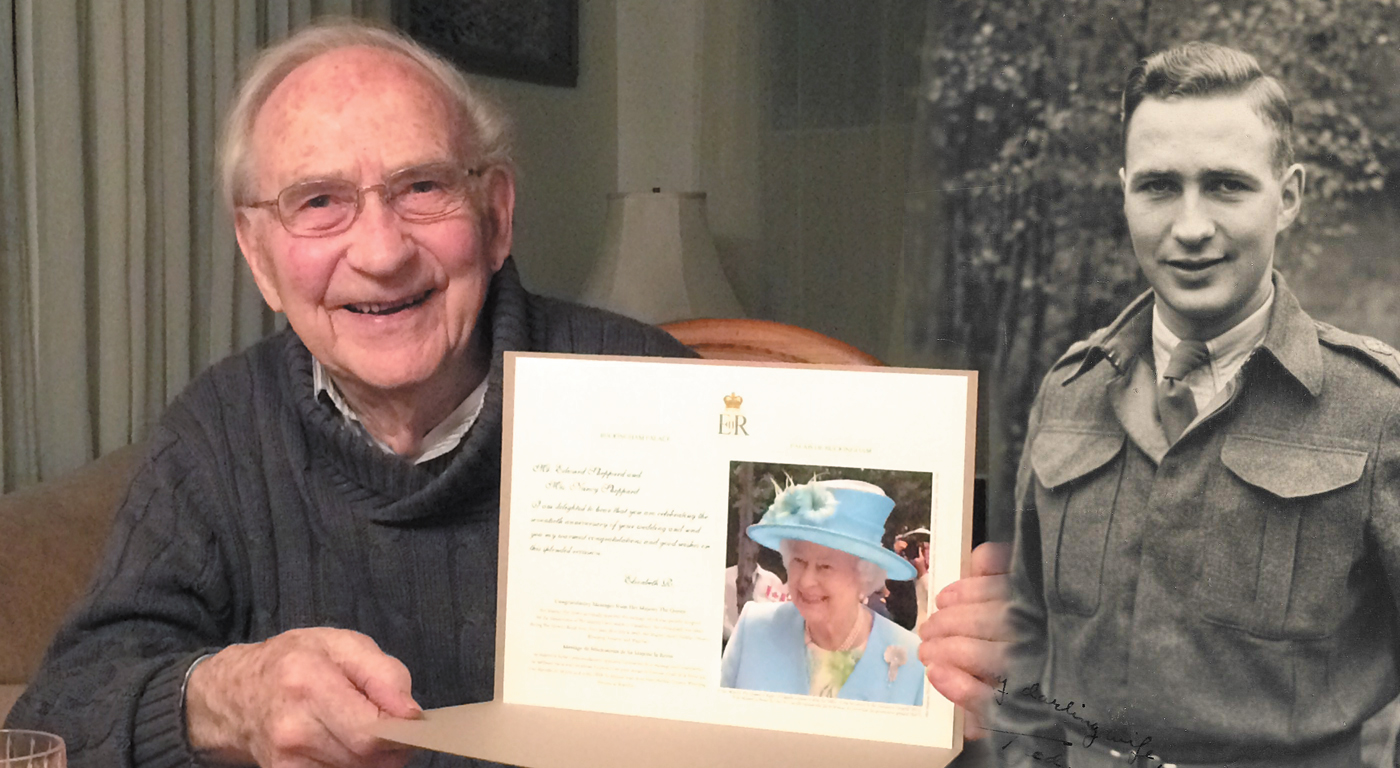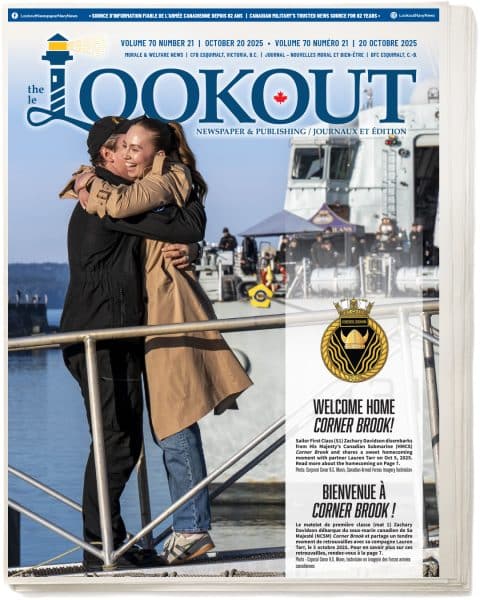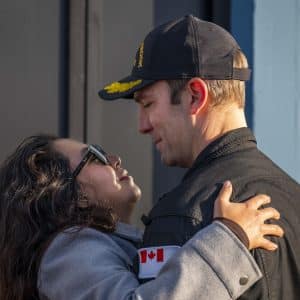
Left: Second World War veteran Ted Sheppard displays some of the letters he received over the years including a congratulatory letter from Her Majesty Queen Elizabeth II acknowledging he and his wife Nan’s 50th wedding anniversary. Right: A picture of Lt Sheppard snapped somewhere in Holland in 1944 submitted by his son Mark Sheppard.
Peter Mallett
Staff Writer
––
On Monday Sept. 21, 98-year-old Ted Sheppard passed away at Veterans Memorial Lodge. Before he died, he shared his story of liberating prisoners at Holland’s Camp Westerbork during the Second World War.
Seventy-five years ago, at the age of 21, newly minted Lt Ted Sheppard was in charge of a Canadian platoon who were the first Allied soldiers to arrive at Camp Westerbork.
Located 40 kilometres south of Groningen, The Netherlands, the site was used as a staging camp for more than 100,000 Dutch Jews during the darkest days of the Holocaust. Most of the men, women, and children interred at the camp between 1942 and 1945 were eventually sent by rail to their deaths at infamous concentration camps Auschwitz and Sobibor.
On the morning of April 12, 1945, ‘C’ company of No. 7 troop of the 8th Canadian Reconnaissance Regiment, which included five armoured cars and approximately one hundred men, rolled up to the Nazi prisoner of war camp in the twilight hours of the morning.
They approached cautiously, explained Sheppard.
The guard towers were unoccupied, the gates were open, and the main parade square and courtyard of the camp were deserted.
“It felt like we had arrived in a deserted ghost town.”
Frightened prisoners were hiding in the barracks, not knowing if the armoured cars were those of the Germans, ready to open fire on them.
“I can remember how quiet and eerily desolate the camp appeared even minutes after we arrived. Then suddenly hundreds of people poured out of the buildings toward us.”
An elderly man, so overjoyed with their liberation, climbed onto the Daimler Armoured Car to shake his hand. He handed Sheppard a yellow star with the word “Jood” etched on it, the Dutch word for Jew. Under the Nazi regime, Jewish people were forced to wear these identifiers on their clothing with the intention to isolate, harass, or humiliate Jewish people prior to their internments in concentration camps.
“He took it off his jacket, handed it to me, and insisted that I have it. You could see the tears of joy welling up in his eyes.”
Sheppard never saw the man again but the encounter was a powerful one, a memory held strongly over his life.
Sheppard advised his Squadron Division headquarters about the results at the camp, and was instructed to move further north to the village of Amen, where they camped that night.
Less than four months later in Berlin, the Germans would sign off on conditions of their surrender.
The events of the war are chronicled in Sheppard’s diary, given to him by a cousin in England before he left for the war in 1943. Due to the risk of sensitive information falling into enemy hands, keeping diaries was strictly forbidden for Canadian soldiers. But Sheppard said he couldn’t resist the temptation to document his travels. It was small enough to fit inconspicuously into the pocket of his uniform.
“It was important to me because I felt what I was doing needed to be shared,” said Sheppard. “In those days fellow soldiers wouldn’t have ratted me out for keeping it, but I kept it a secret anyway.”
In the months following the war’s end, Sheppard met his wife Nan in England; he and his new war bride would eventually move to Canada, where he became a doctor.
The couple were married for 73 years and had five children before Nan died in January.
Family members say it was a blessing that even in her final moments the couple were never far from each other, living two rooms apart at Veterans Memorial Lodge.
Over his life, Sheppard nurtured a friendship with 101-year-old Holocaust survivor and former Westerbork prisoner Rosa Flam. Flam was a young woman who had been hiding out in the camp’s infirmary on its day of liberation when Sheppard came across her. Flam had been wounded by a gunshot while trying to escape the Germans.
“She had been hidden by a Protestant family and then someone divulged her location to the Germans,” said Sheppard. “She was trying to escape from the farm where she was hiding and was shot in the leg.”
Flam planted a tree in Sheppard’s honour when she visited Israel as an expression of thanks to him and the other Canadian soldiers who came to her rescue.
A museum commemorating the camp and its Holocaust victims operates in close proximity to the original location. There is a memorial of 102,000 stones representing each person who was deported from Westerbork.
An audio account of Sheppard’s wartime experiences are available on Historica Canada’s The Memory Project website: www.thememoryproject.com/stories/782:edward-john-ted-sheppard/
––––









